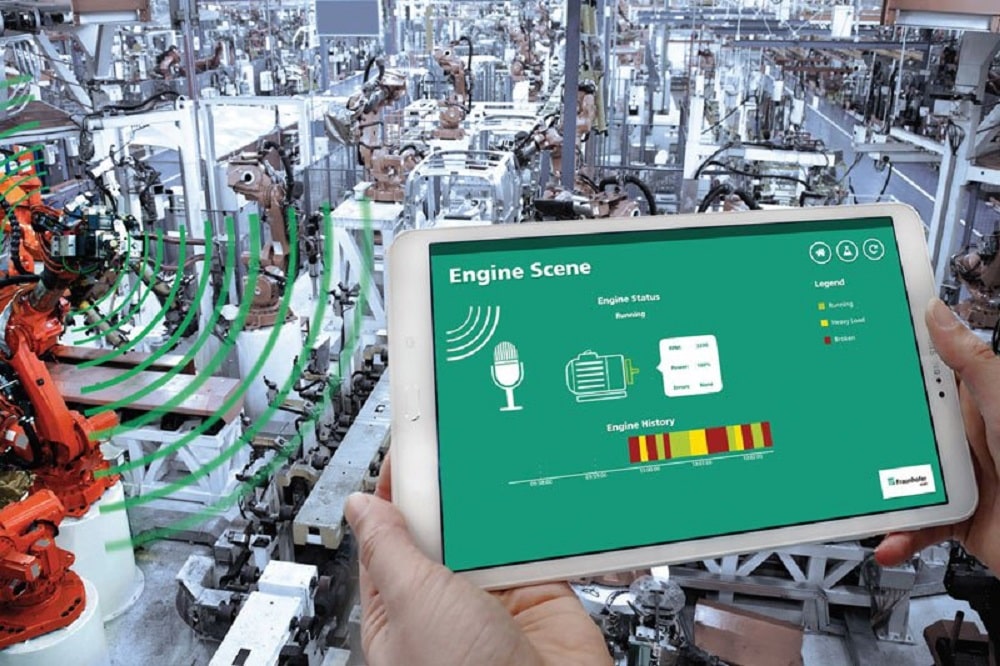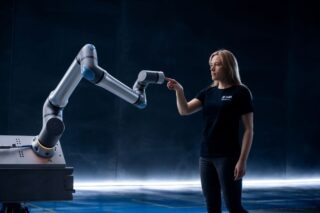The recent developments in IoT sensors, advanced analytics and artificial intelligence promise to make it easier to predict when equipment will fail.
Predictive maintenance (PdM) consists in collecting data on the condition of machinery so that engineers can foresee possible outages or failures before they even happen. This makes it possible to replace any failing components before they cause damage.
The Fraunhofer Institute for Production Systems and Design Technology in Berlin has been working on the concept since the early 1990s. But the Institute was pushing against technical limitations, says Claudio Geisert, deputy head of Production Machines and Line Management.
“It was very hard to get access to data and implement machine-to-machine communication, as well as develop the algorithms for predictions.”
Now, inspired by consumer micro-electronics, IoT sensors are cheaper, smaller and readily available. Meanwhile, libraries of machine-learning software in modern programming languages such as Python make building predictive algorithms easier and quicker.
“The greatest benefit is that the availability of production systems is higher and we are able to help prevent unplanned standstills.”
Eckhard Hohwieler, head of Production Machines and Line Management at the Fraunhofer Institute says using PdM makes it easier to plan and coordinate maintenance on production systems. But IoT data can also help manufacturers improve design.
“When equipment manufacturers provide information about the usage of machines, data and insight can be applied to product design and offer ideas to improve functionality and robustness.”
PdM Lift-off
With recent advances in technology, PdM is in the spotlight. Elevator manufacturer ThyssenKrupp developed MAX, a machine-learning IoT solution now used for 110,000 elevators worldwide. Machine data (including door movements), power-up, trips, car calls and error codes are collected from connected sensors worldwide. The resulting data is fed to cloud-based analytics software, which runs unique algorithms developed by ThyssenKrupp to spot patterns likely to predict failures. The company says precise and predictive diagnostics are delivered to the technician in real time, indicating where intervention is required. It also states that the approach dramatically increases elevator availability by reducing out-of-service time and employing real-time diagnostics.
MAX predicts maintenance issues before they occur, helps offer elevator engineers diagnostics insight and suggests which components need replacing ahead of a site visit.
Hyun-Shin Cho, head of digital operations at ThyssenKrupp Elevator, says the number of elevators using the system represents 10% of the working elevators they service for their customers. The company has been retrofitting IoT devices to older systems as well as integrating them into new units, and it has also developed its own cloud-based machine-learning system to analyze the data.
However, to make the most of the investment, it is not enough to just collect the data. Organizations should analyze and integrate it into the business process, Cho says:
“Predictive maintenance is one part of what we do. But another major benefit of the system is troubleshooting. When an elevator using the system breaks, we see the signal in real time. We analyze that information and technicians have it on hand when they arrive on site. Traditionally, they would have to troubleshoot. Now our cloud technology ensures engineers have the diagnosis at hand.”
AI in the Service of PdM
Despite advances in PdM, challenges remain. Predictive models can require large amounts of performance and condition history data to learn from before they can make forecasts for equipment accuracy. Time may also be needed to analyze live data to be able to establish normal baselines for performance. In order to have PdM working as a practical tool, months of data analysis and investment in data scientists is required.
To address these challenges, DataRPM Corporation uses artificial intelligence. The cognitive technology company serves customers in the oil and gas, automotive and semiconductor industries. It says its platform, built on big data tools such as Hadoop and Apache Spark, helps automate steps in data science using machine learning to determine which data models will be most effective. This meta-learning approach increases prediction quality and accuracy by about 300% and requires 3% of the time and resources to get up and running compared to other approaches to data model development.
Ruban Phukan, DataRPM co-founder and chief product officer, explains:
“We use meta-learning to automate some of the tasks in data science that require experts to learn from past experiences. We then transfer that knowledge so it can be applied to domains with similar requirements.”
Predictive maintenance has come a long way since the 1990s. As IoT sensors become more commonplace and artificial intelligence advances, one thing is easy to forecast: more organizations will start to rely on it in some form or another.












